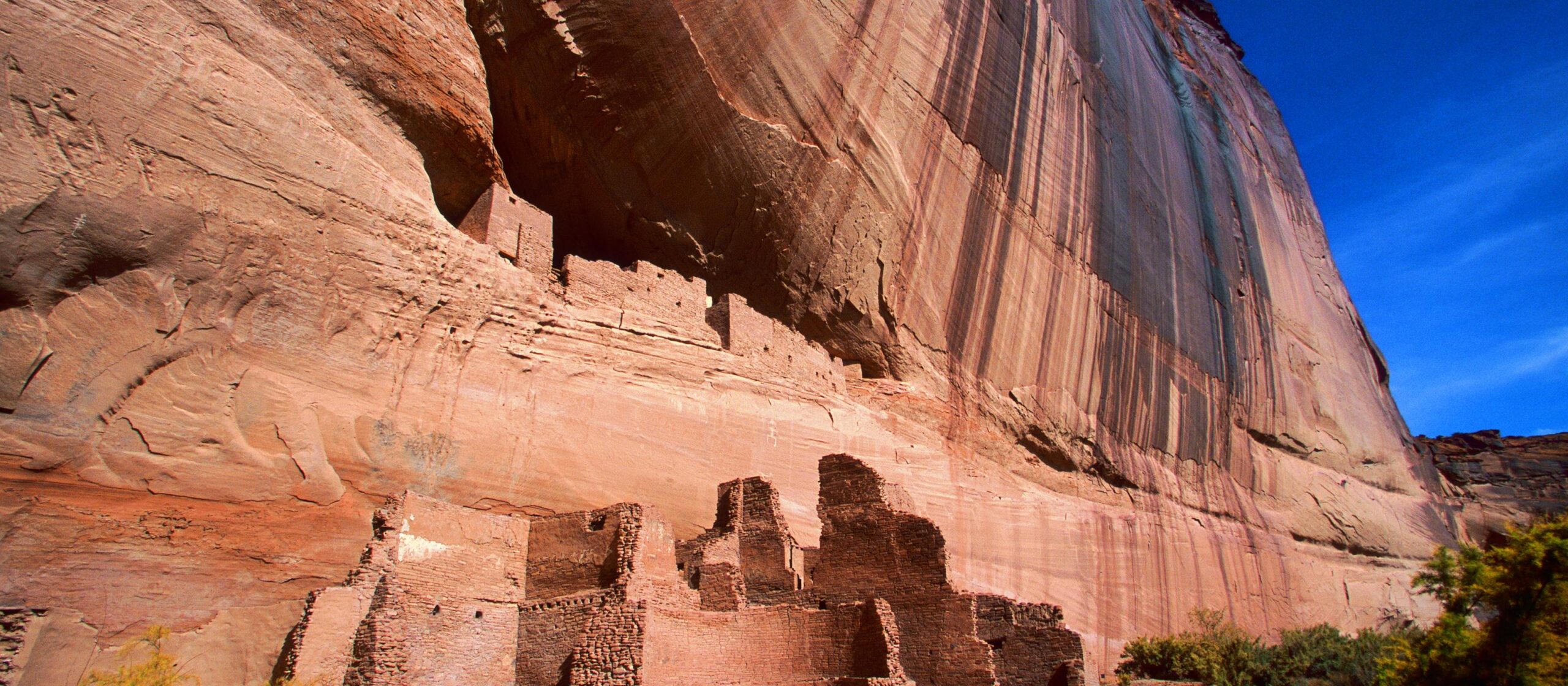Adventurers are rewarded with breathtaking views and an insight into traditional Native American life when they visit Canyon de Chelly.
Adventurers who venture to the Canyon de Chelly (pronounced “de-SHAY”) National Monument in Arizona’s eastern border are rewarded with breathtaking vistas and an insight into traditional Native American living.
This striking canyon with sandstone walls is located 379 kilometers northwest of Albuquerque, New Mexico, on the Navajo Indian reservation. It is home to hundreds of years-old ancestral puebloan dwellings and rock art, as well as prehistoric campsites and etched images of the Archaic-era people who were the first people to live in the canyon thousands of years ago. This region has been occupied by the Navajo people for about 300 years.
Cottonwood-fringed washes wind between the 305-meter-high walls of the canyon, passing by modest farms, vibrant green meadows, massive sandstone monoliths, and the odd hogan (a traditional Navajo dwelling). Little adobe homes and groups of rock carvings known as petroglyphs—which show animal images, spirals, snakes, and other imaginative symbols—can be seen clinging to the cliff walls.
What to See in Canyon de Chelly
Take in views of the canyon from either of the two picturesque rim roads, which are separated by panoramic viewpoints and span 64 kilometers each way from the visitor center. Early in the morning is the finest time to take photos along the North Rim route. Great photo opportunities can be found at the expansive Antelope House Overlook.
Take a drive along the South Rim road in the afternoon, when the light is softer and produces vibrant, rich photos from seven overlooks over the canyon. During this time, Navajo merchants and photographers will be busy selling handcrafted jewelry, pottery, paintings, and other goods.
The monolithic Spider Rock, with its two sandstone spires rising 244 meters above the canyon floor, is the South Rim’s spectacular climax. A little walking trail leads from the overlook parking area to breath-taking vistas of this famous rock structure.
One famous and must-see rock formation in Canyon de Chelly is Spider Rock.
Things to Do in Canyon de Chelly
The area is sacred to the Navajo tribe even though it is controlled and maintained by the US National Park Service. The Navajo people inhabit and manage farms within the canyon, making it a distinctive destination for tourists. Except for one hiking trail, you must be guided by an authorized Navajo guide in order to access the canyon.
The White House Overlook on the South Rim road, approximately 9.6 kilometers from the visitor center, is where the 4 km round trip White House Trail starts. This steep, twisting journey to the base of the canyon, where the old cliff residence White House Ruin awaits, doesn’t require a Navajo guide. The remains, which date to around 1200, are located close to the foot of a sheer cliff that rises to a height of 152.4 meters. The archaeological site is protected from climbing by fences, yet it’s still amazing to see. There are Navajo vendors offering drinks and snacks, including warm Navajo frybread, which is deep-fried flatbread topped with powdered sugar, cinnamon, and honey, close by. There are also public facilities.
Within the canyon, Navajo guides lead horseback riding, hiking, and four-wheel driving excursions. Your time and money constraints will determine the tour you take. One of the most well-liked canyon excursions are Thunderbird Lodge’s “shake and bake” tours. You will board a large, twelve-passenger flatbed truck for this jolting, three-hour excursion. While you tour sites like Antelope House and White House, guides point out prehistoric rock art and discuss Navajo folklore. You may sign up for a private, four-wheel-drive trip with a company like Antelope House Tours for a little bit extra money.
Unknown to many, you can traverse the canyon in your own four-wheel-drive car—which is required because the roads are made of deep sand—as long as a Navajo guide goes along. There are guides in the visitor center parking lot requesting business.
You can walk the White House Trail on your own. To explore more of the area, however, you will need a Navajo guide.
Where Can I Sleep
The Thunderbird Lodge, located inside the monument, has simple rooms on peaceful grounds beneath cottonwood trees. Adjacent to the park entrance, in the sleepy Navajo hamlet of Chinle, are commercial motels. Don’t anticipate luxury. Be prepared for exorbitant prices from April to October.



